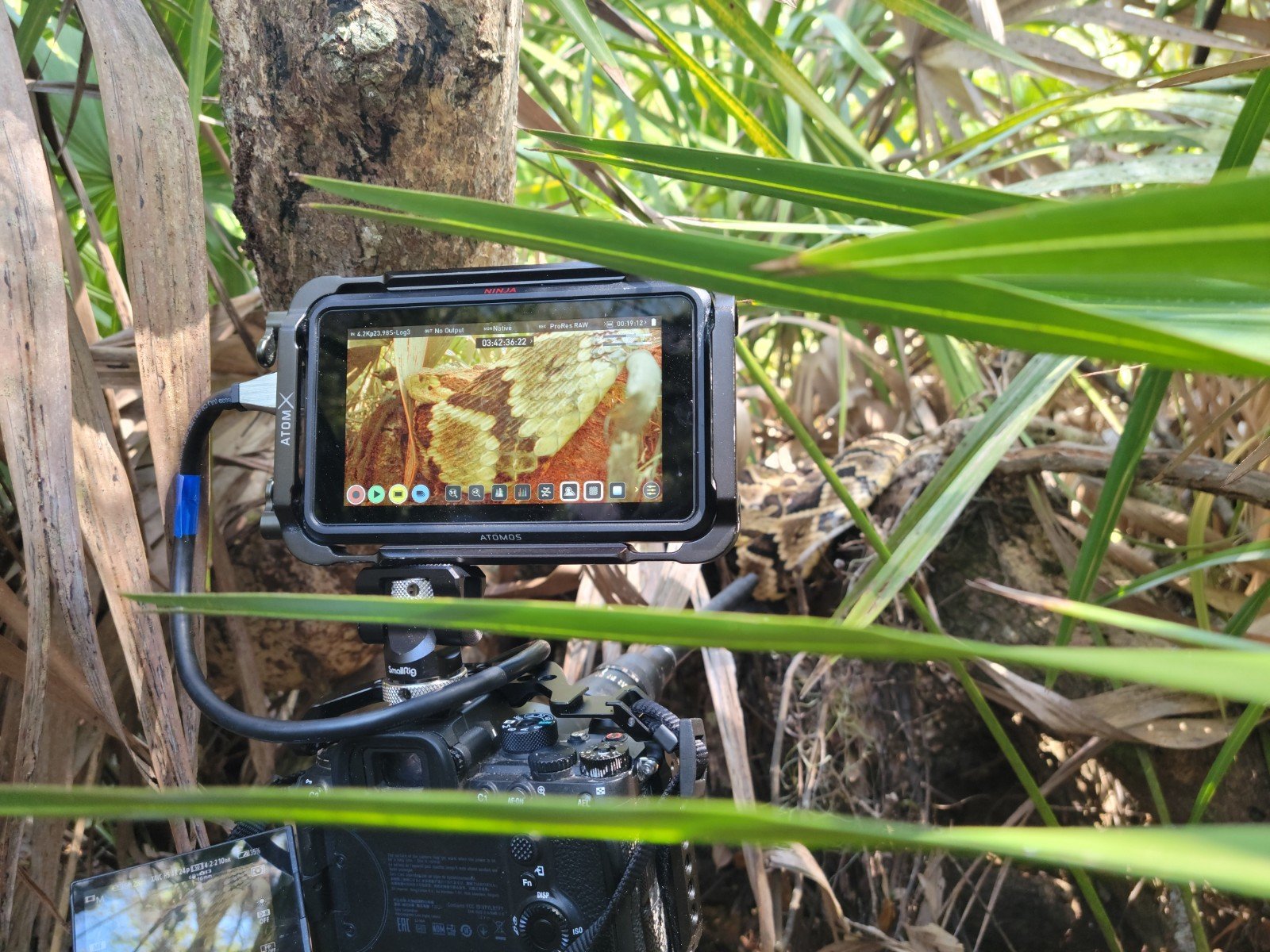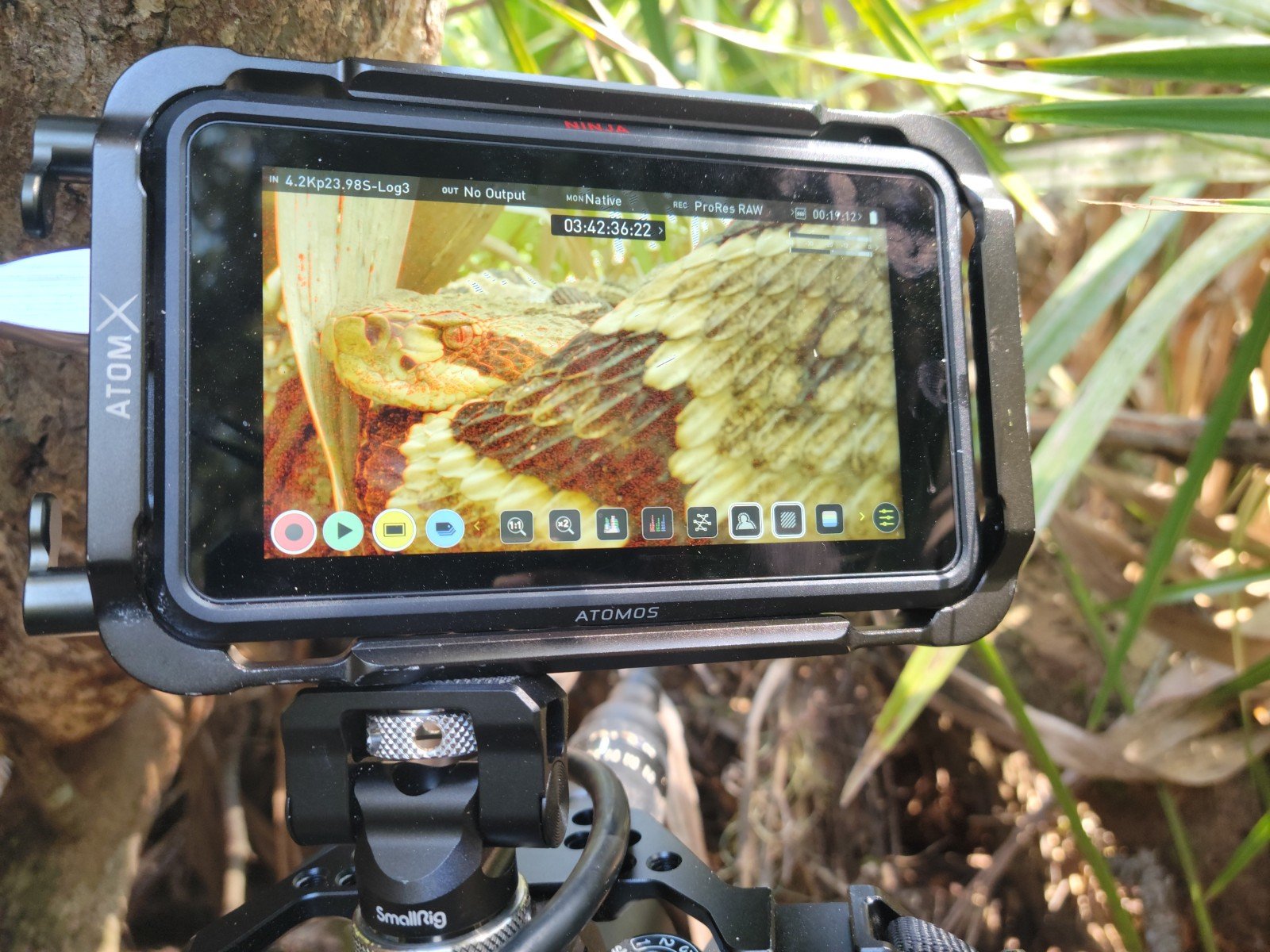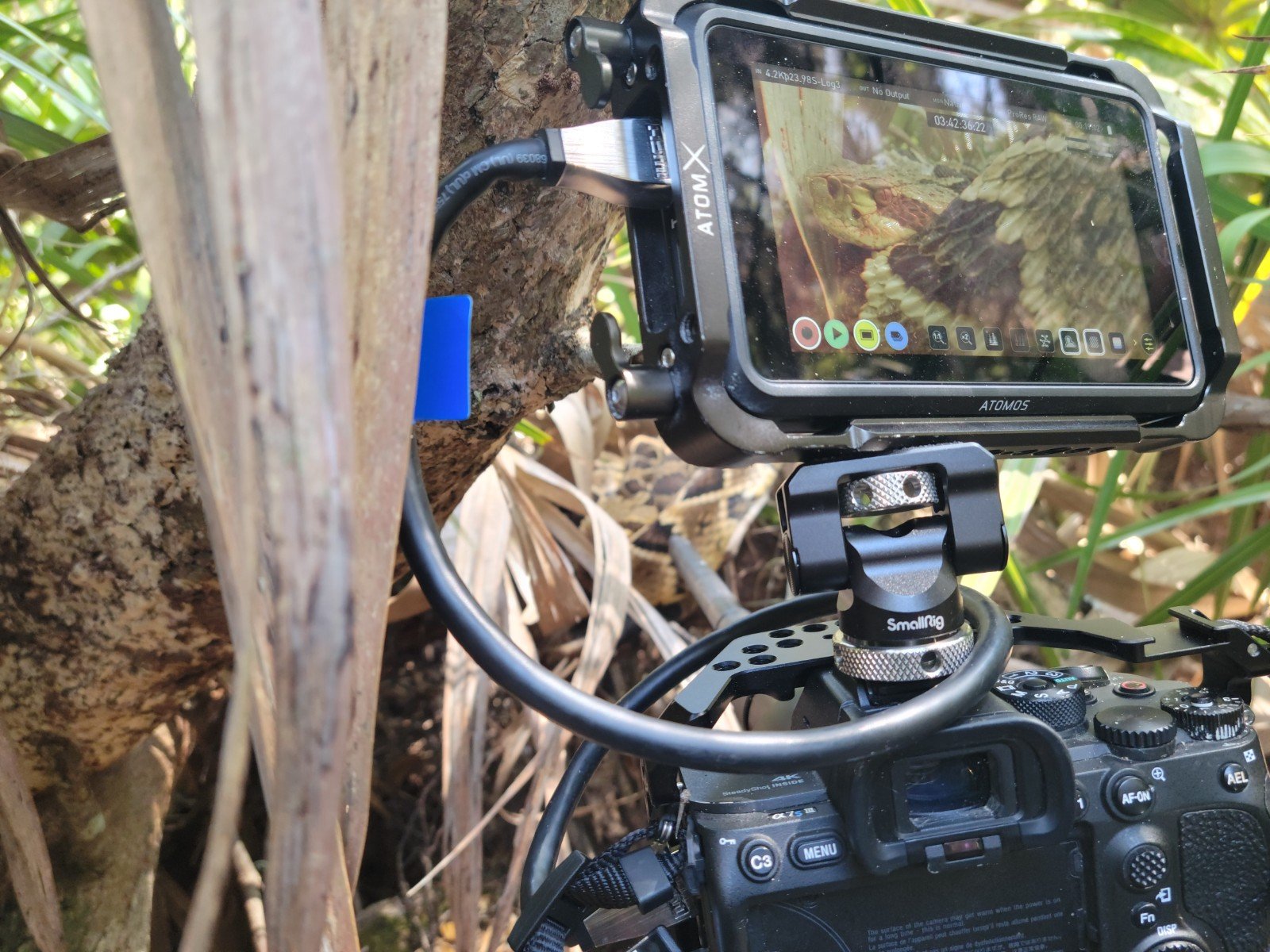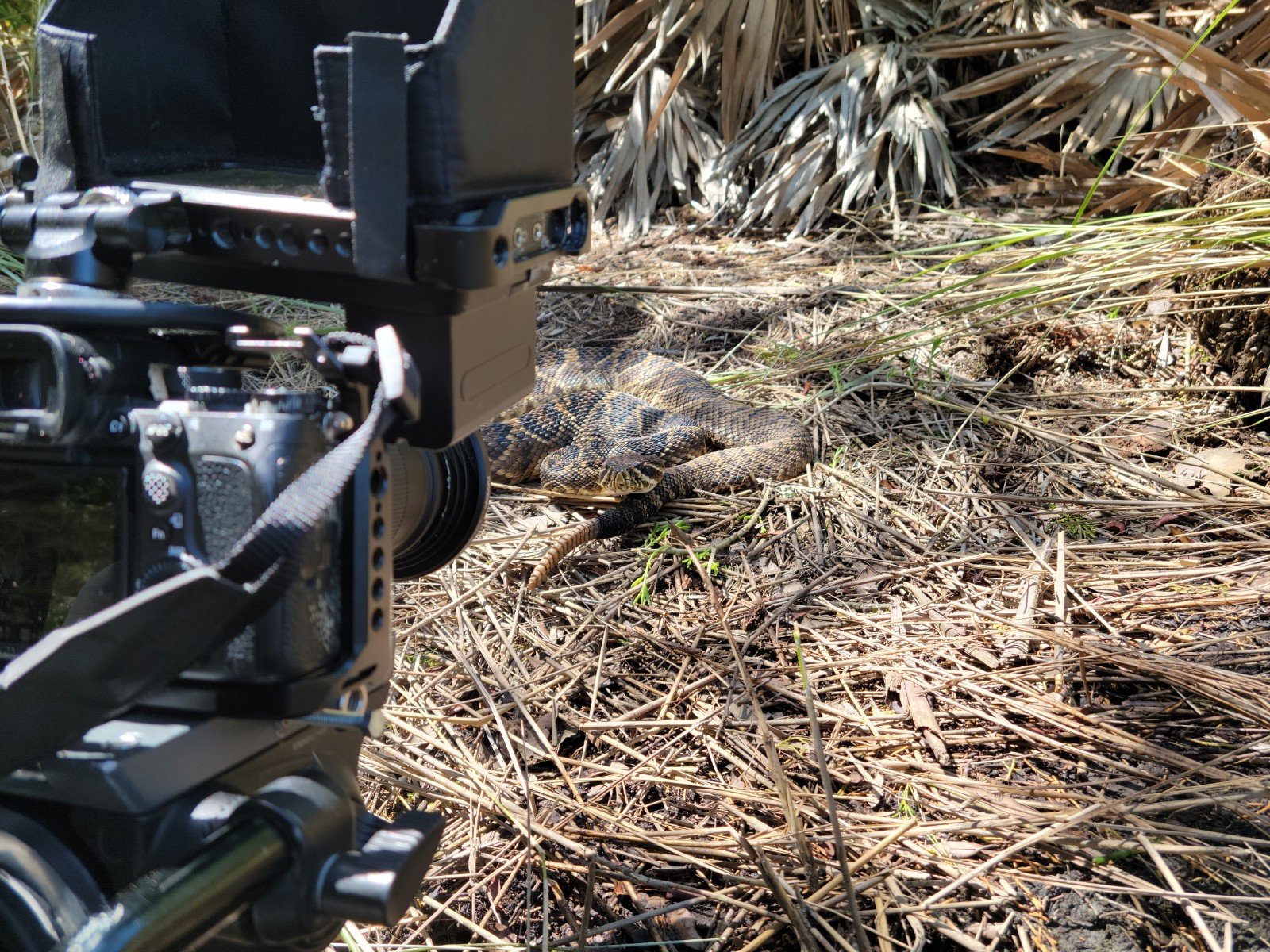Filming rattlesnakes along Georgia's coast is no easy task. Just locating these stealthy animals is a complicated and exhausting endeavor. Luckily, we know a guy and teamed up with the Jekyll Island Authority to explore this beautiful barrier island and get up close and personal with some of the Island’s most secretive residents.
The loud pinging noise becomes ever clearer as biologist Joseph Colbert swings his radio telemetry antennae around towards a giant clump of saw palmetto. “I bet you she’s under there somewhere,” he says as he uses his snake hook to clear the vegetation away so we can see the base of the plant. Sure enough, there was a large eastern diamondback rattlesnake sitting right there in ambush, most likely hoping for a marsh rabbit to run by. Each snake that is a part of the Jekyll Island Authority research project has a radio transmitter that emits a frequency that can be picked up by the antennae. This allows biologists to better understand where these snakes hang out and what habitat they prefer to use. This also allows them to find them throughout the year and collect valuable data such as how much they weigh. Getting to each snake was difficult, painful at times, and required bushwhacking through tick-infested underbrush for several hundred meters in the Southeastern humidity. Sweet, blood, and tears were plentiful, but every time we went out into the field we were rewarded with incredible encounters with the resident pit vipers.
Co-founders Justin and Alex went out with Joseph to film his research, get up-close footage of the snakes, and explore Joseph’s story from his military service with the US Marine Corps to serving as the Island’s biologist. The team is currently working on a short film about the topic which will be released later this year.
When approaching each individual, extreme caution was used and we gauged the temperament of the snake. Due to the time of year, the snakes were not exceptionally jumpy and were tolerant of our presence. We then got close by using a specialized lens that looks like a long skinny tube called a Laowa probe lens. This lens allows us to get a wide-angled macro shot of the animal, showing it in its natural environment. These snakes are incredibly venomous, therefore, we had to secure a specialized permit in order to do this kind of filming.







